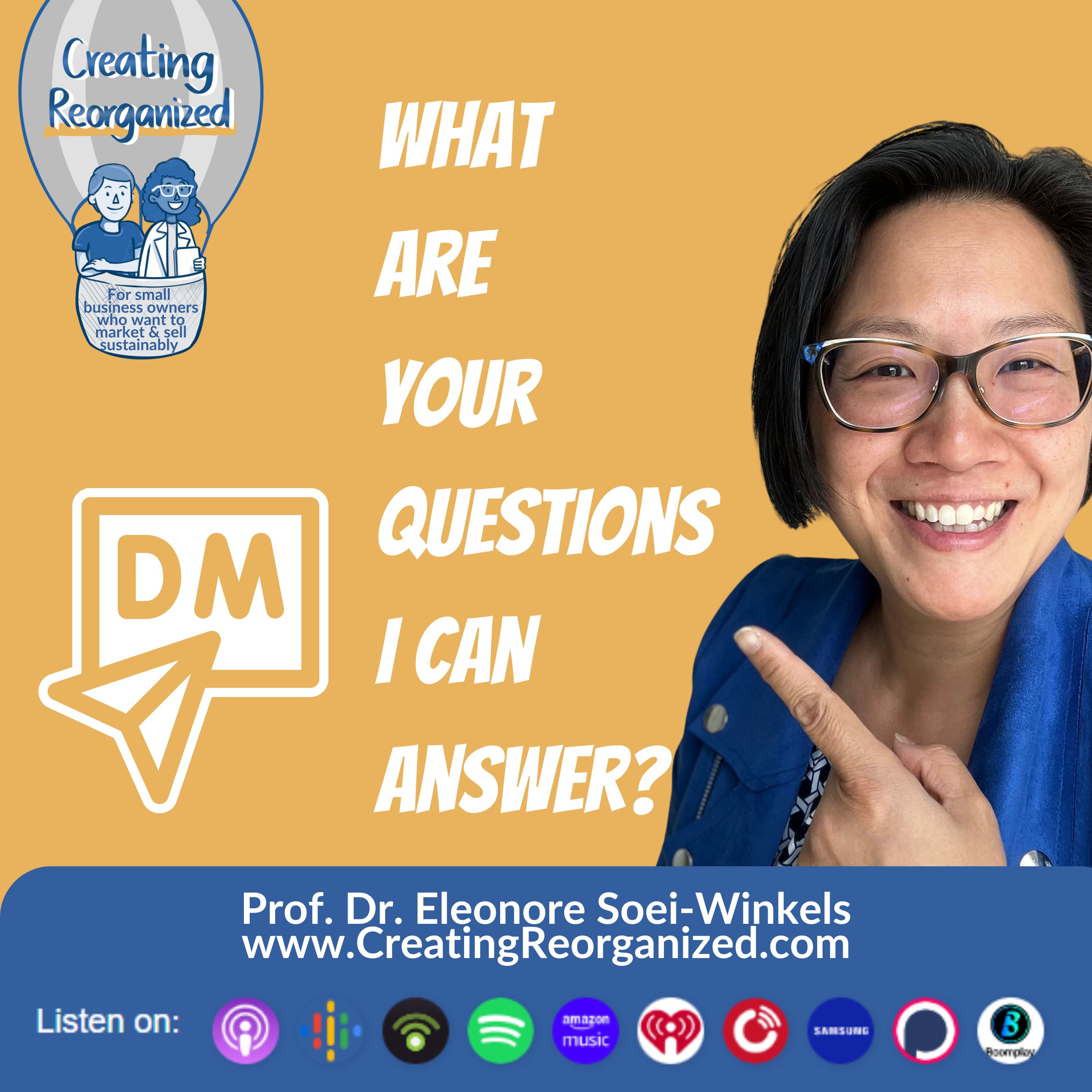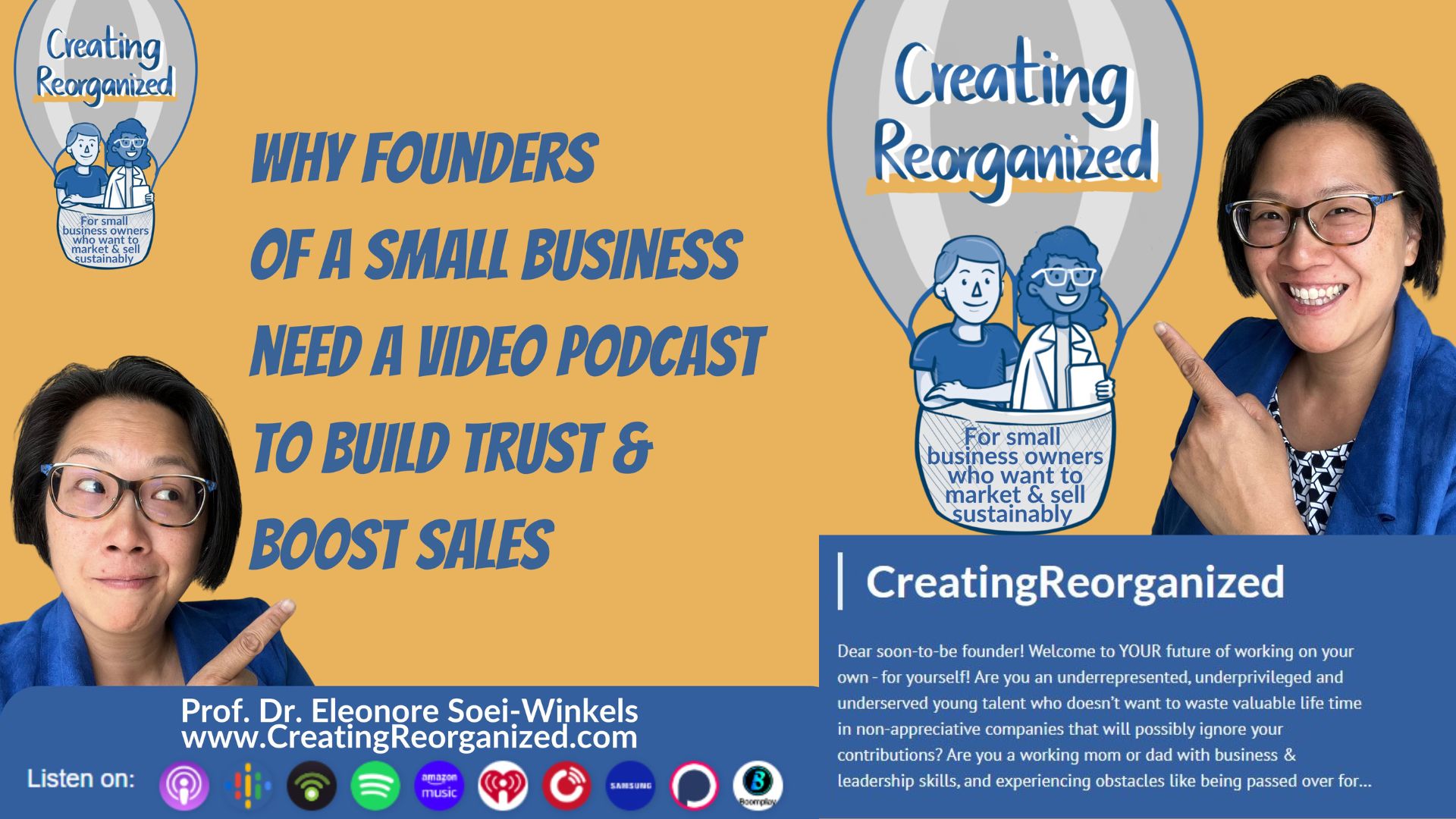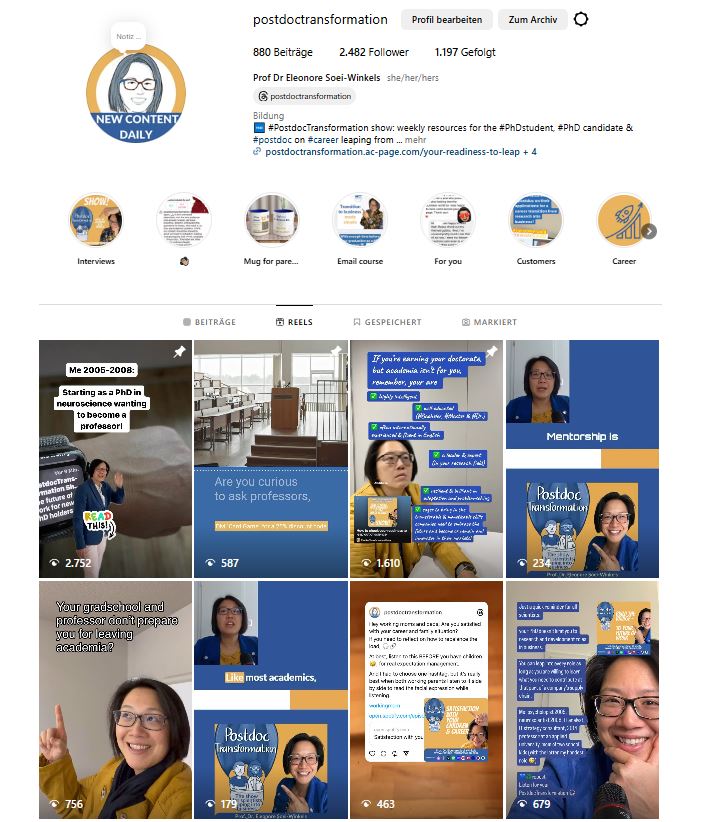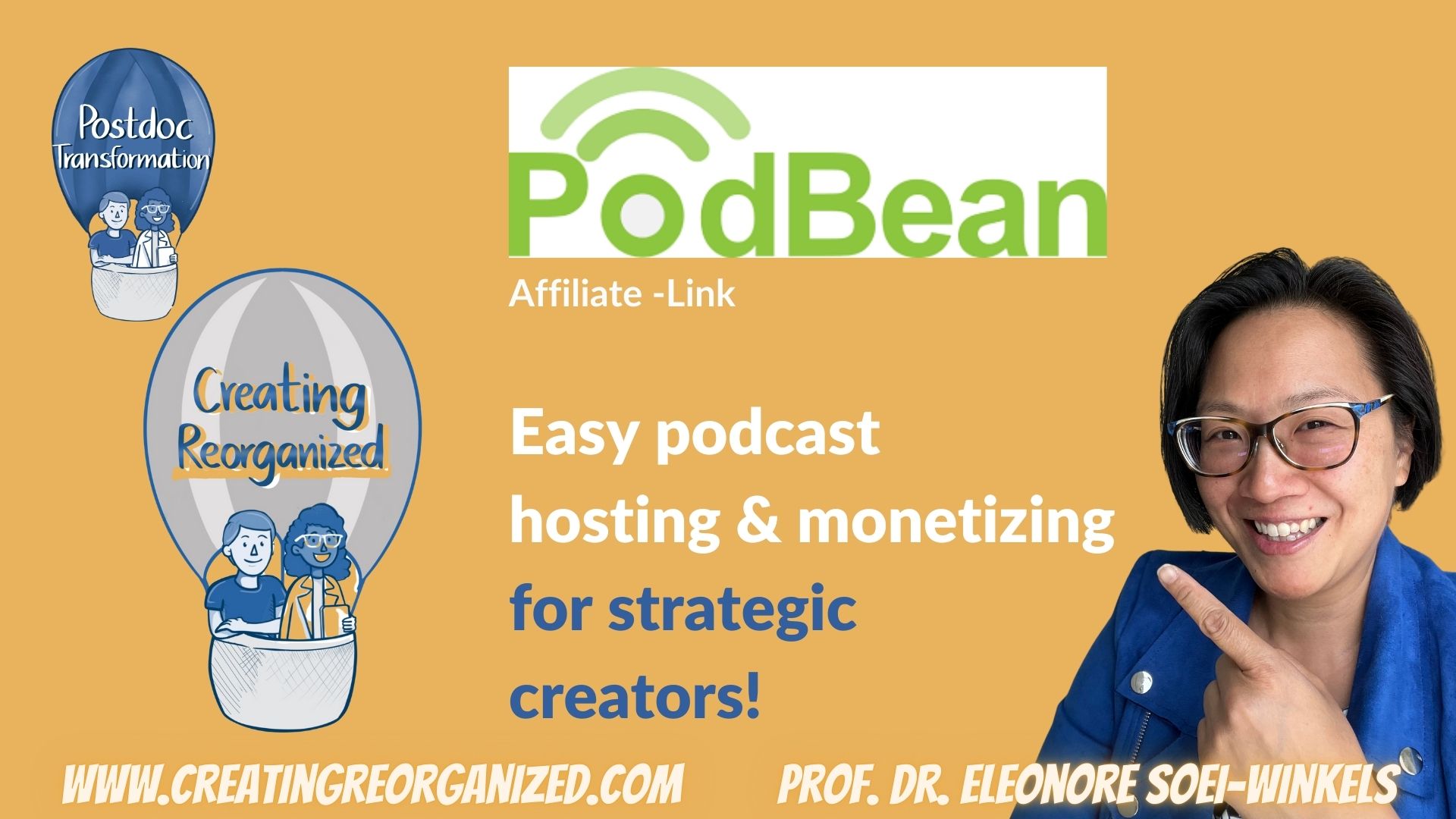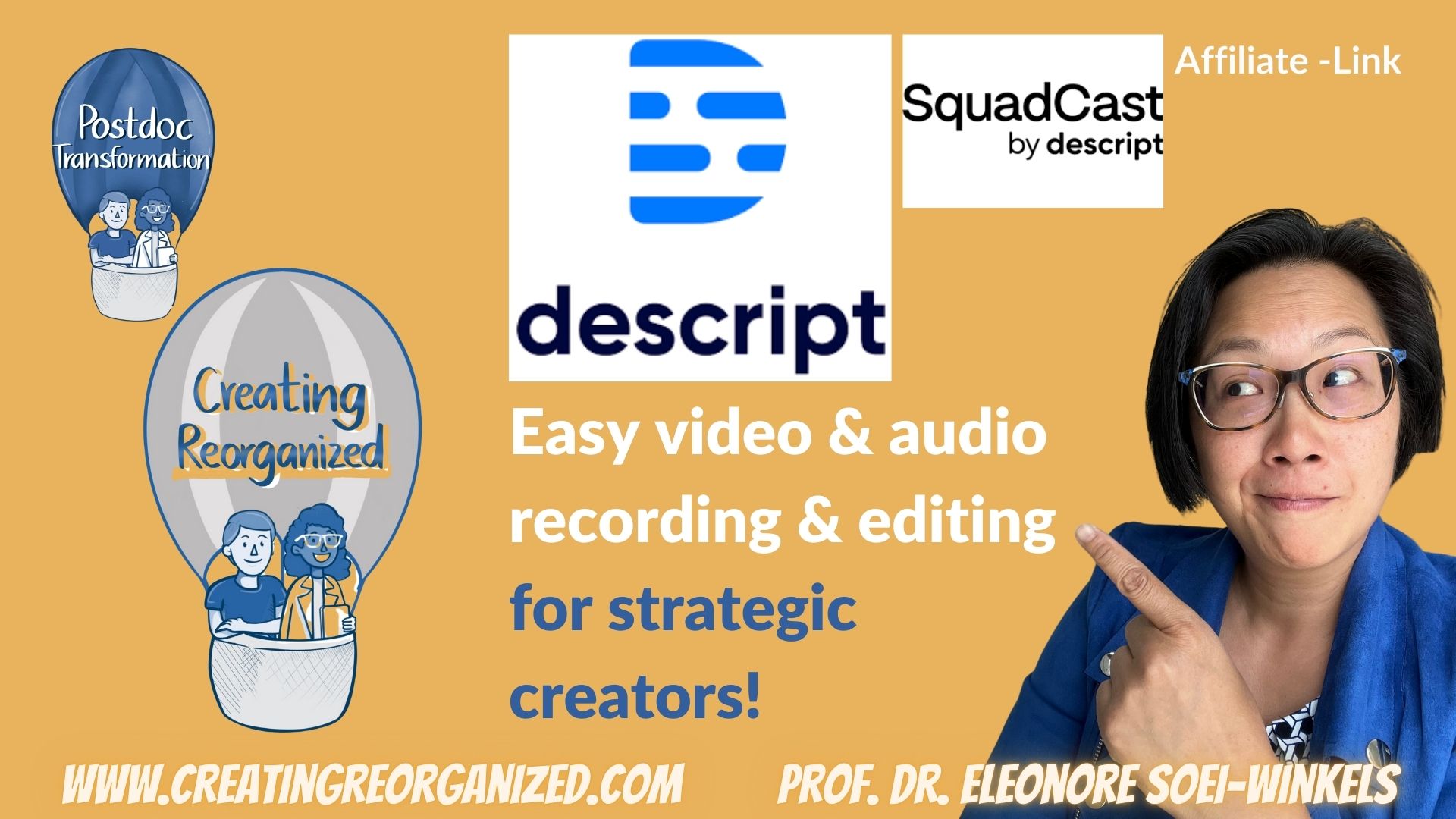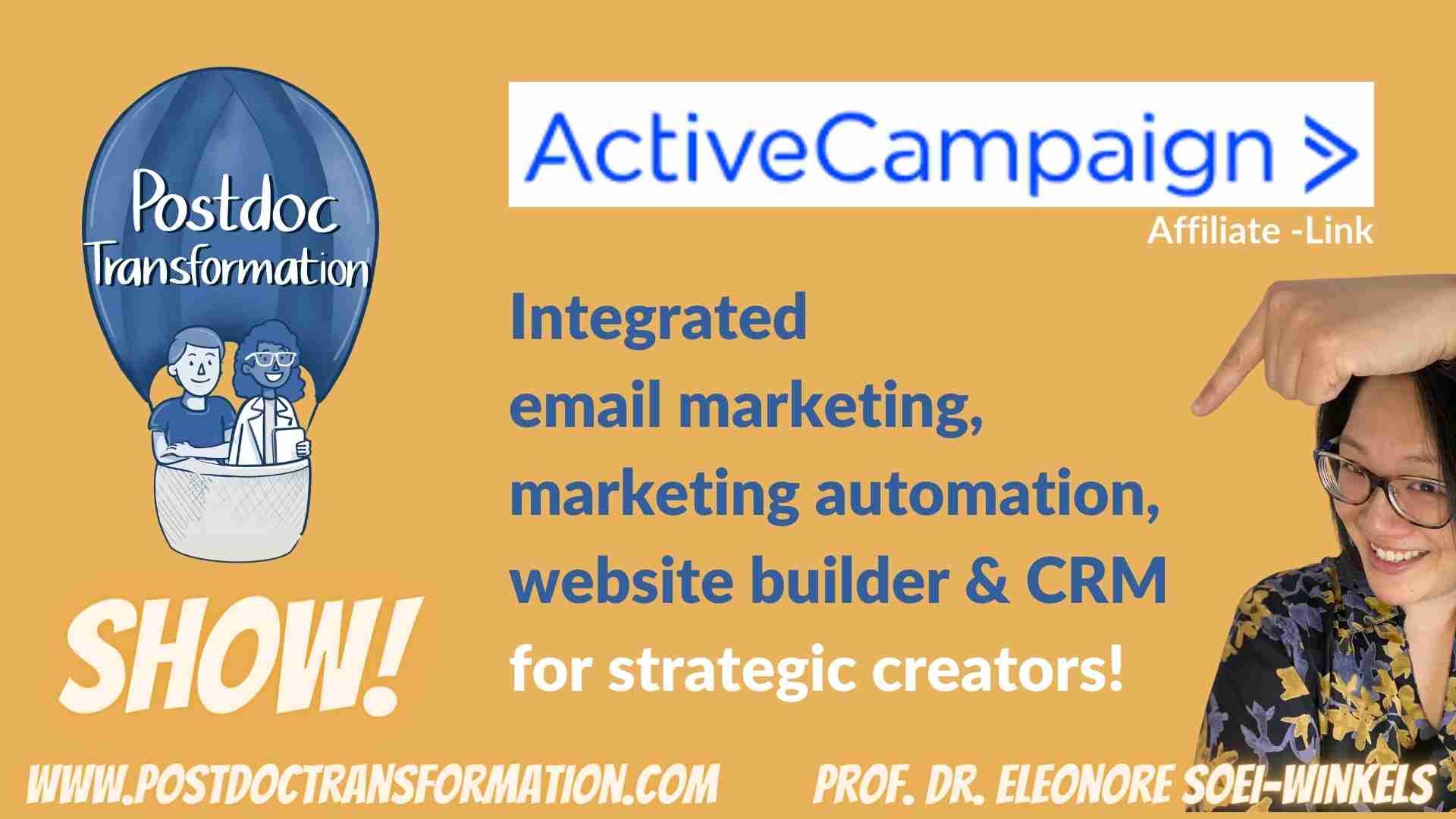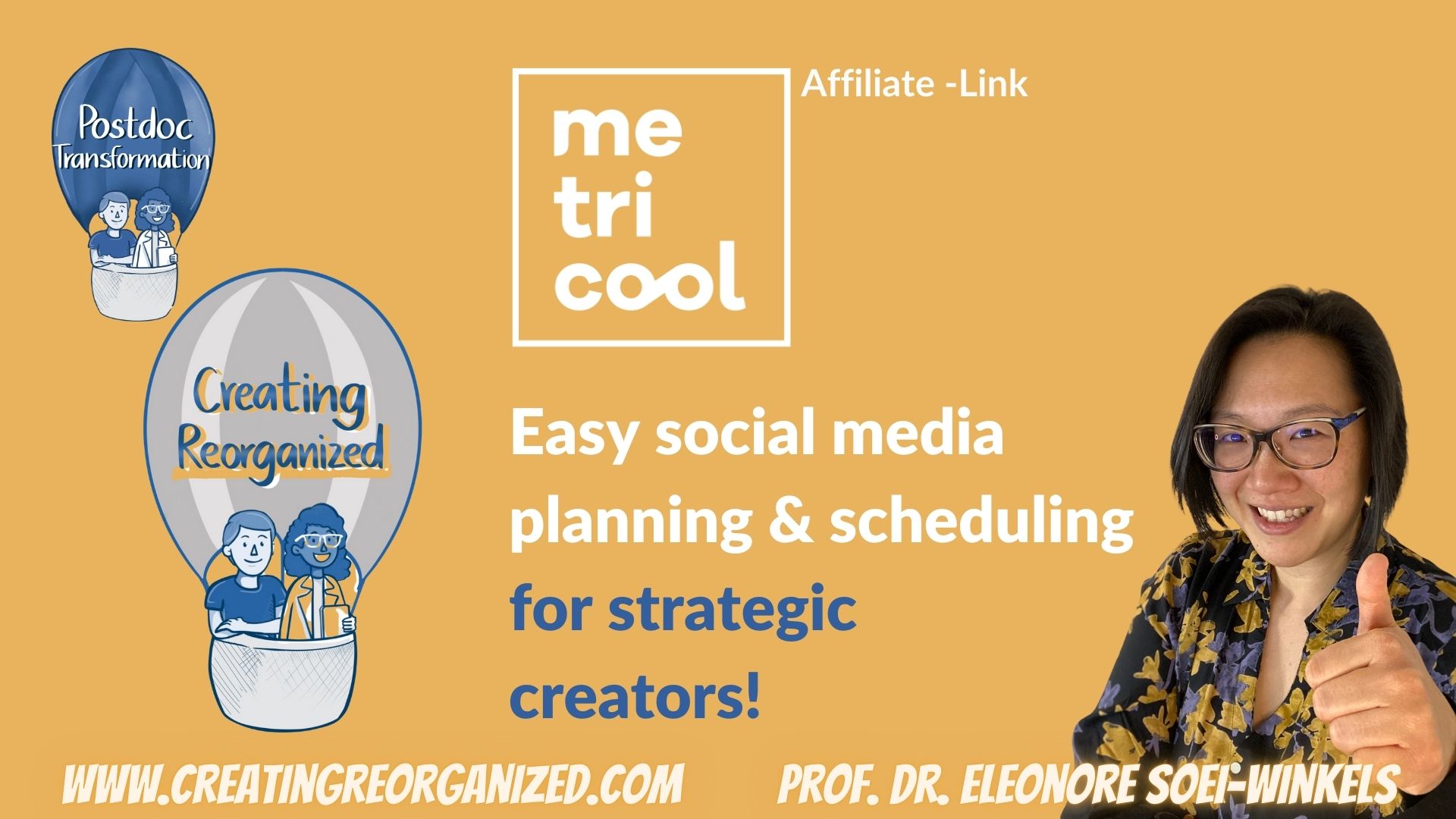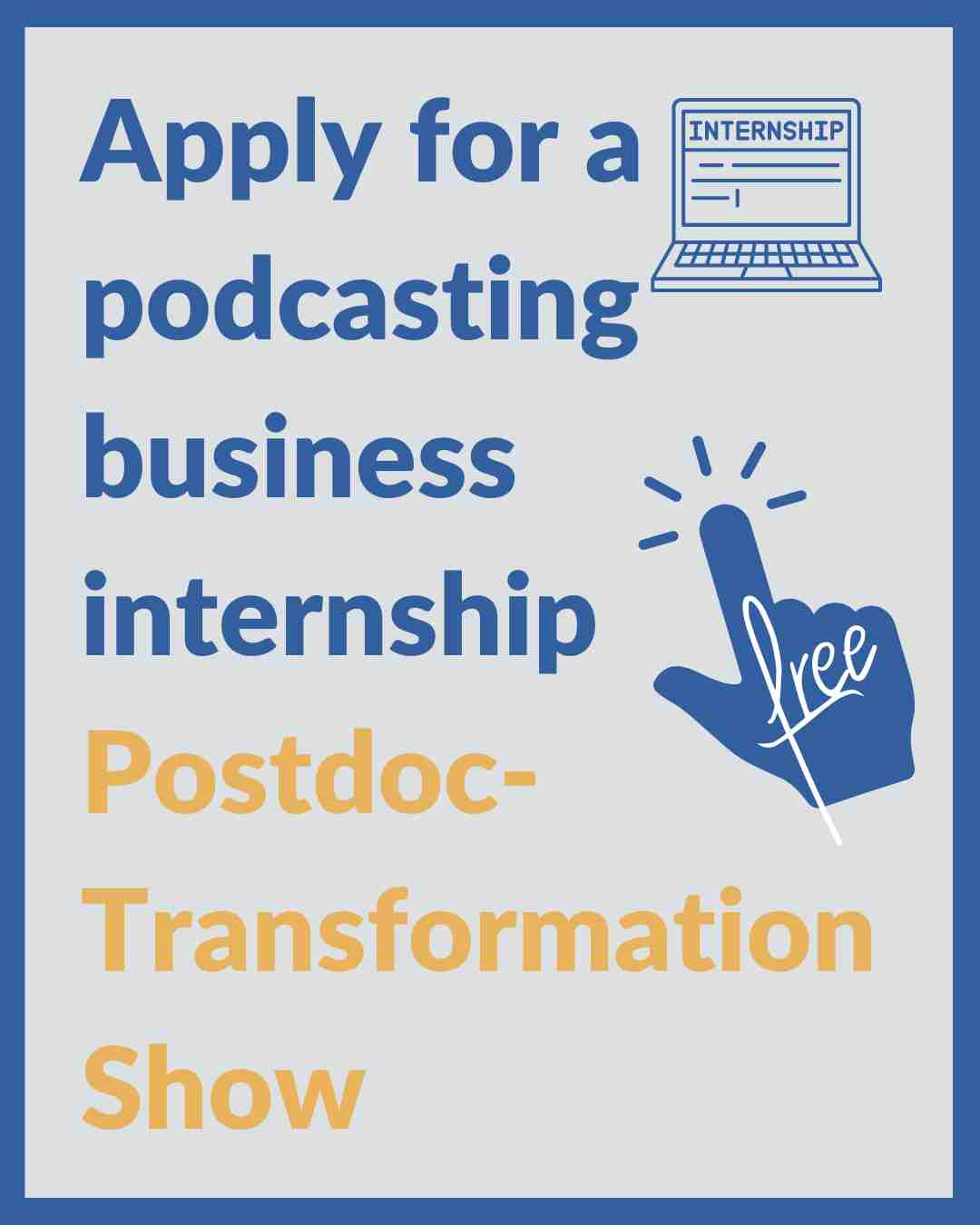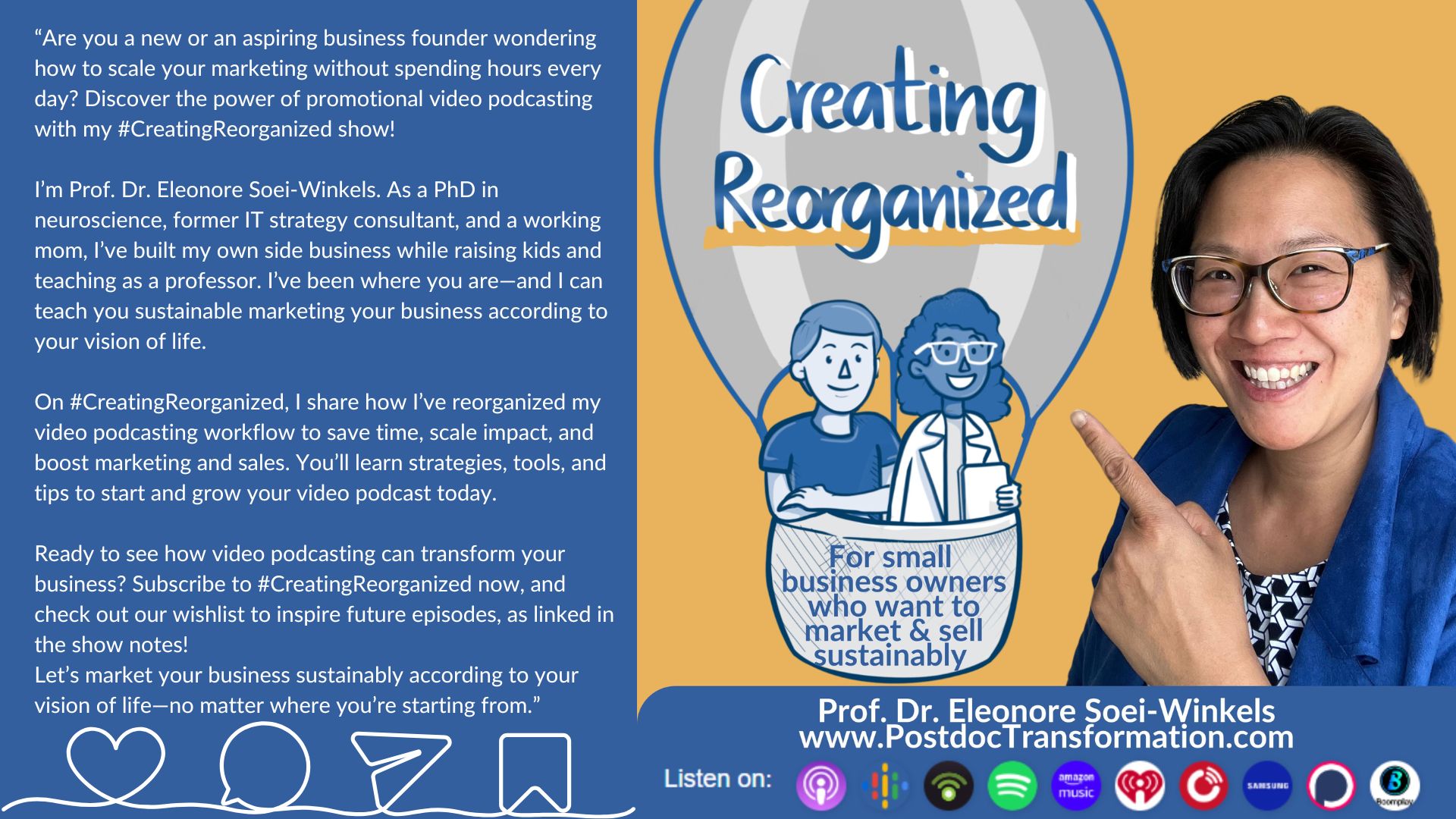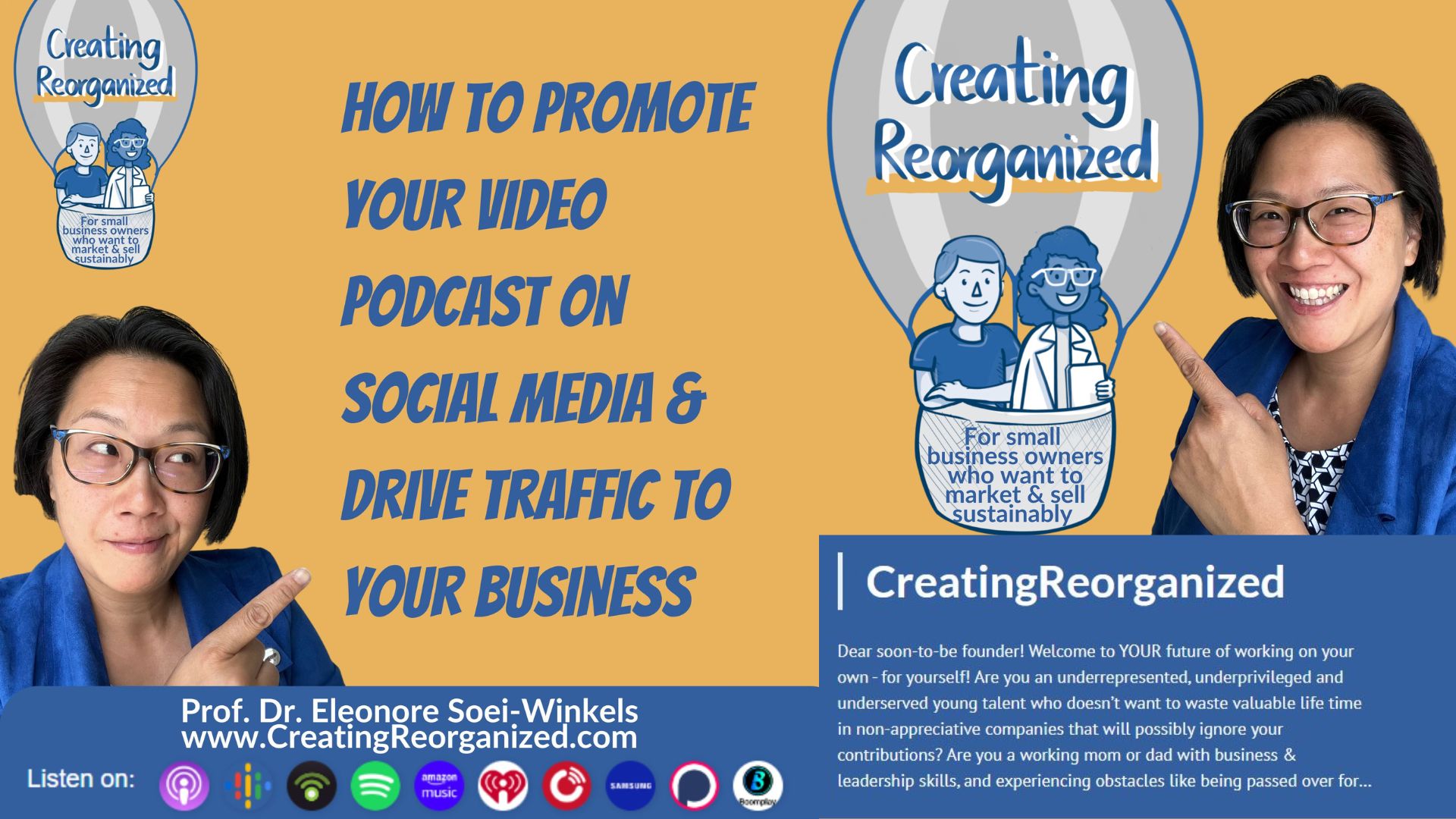
How to promote your video podcast on social media and drive traffic to your business, CreatingReorganized show
In this episode of the #CreatingReorganized show, you learn how to promote your video podcast on social media and drive traffic to your products and services.
Prof. Dr. Eleonore Soei-Winkels shares her expert strategies and insights tailored for small business owners looking to capitalize on video podcasting as a powerful marketing tool. She covers everything from crafting a social media strategy and choosing the best platforms for promotion to creating engaging content and repurposing it effectively. Learn actionable tips on how to measure success. Iterate on your results based on a human or ideal client avatar centered approach.
By the end of the episode, you'll have a comprehensive understanding of how to strategically use social media to grow your video podcast audience and convert them into loyal customers. Tune in for this invaluable advice and practical guidance to elevate your business marketing efforts.
If you are a new or aspiring founder of your small business and have no time to waste, or really struggle to do your social media marketing, you will enjoy our #CreatingReorganized show!
In my day job as a psychology professor I teach my bachelor and master students in real life, how to reorganize processes in a goal-directed and future-proof way in companies. That’s what I had done for a living as a former IT strategy consultant.
For my own career coaching business on the side, I can only dedicate a fraction of my time – because I prioritize care work for my little children. I face the same or similar challenges like all small business owners. So, I applied all my experience and knowledge to create my other video podcast #PostdocTransformation to streamline my social media marketing and to boost sales of my coaching, e-courses and affiliate products or services.
I strategically capitalize on professional tools to scale my impact according to my vision of life.
Listen and subscribe to this #CreatingReorganized show, so you will learn to do the same for your own business, to build the know, like and trust factor and to boost sales of your services or products!
Please also ask your business-specific questions, because for season 2, I envision interview episodes with aspiring and new founders like you, if you want to get your #CreatingReorganized according to your vision of life!
[00:01:58] Hello dear CreatingReorganizer and welcome to this episode of the CreatingReorganized where we help you as a small business owner create your own impactful profit generating video podcast.
[00:02:27] Today's topic is your next goal directed step, if you have already followed our CreatingReorganized show episodes so far: how to promote your video podcast on social media and drive traffic to your products and services. Well, social media is a powerful tool, but are you using it strategically, intentionally to grow your video podcast and connect your audience to your offerings?
[00:02:53] I'm sure you mean business.
[00:02:54] So going viral on social media without making a sale is not your goal, right?
[00:03:00] But convincing one non follower on social media to click on your video podcast episode, who then clicks on your link to buy your service or product is your goal, right? So in this Creating Reorganized Show episode, you will learn,
1) How to craft a social media strategy that supports your video podcast goals.
2) The platforms best suited for podcast promotion and service or product marketing.
3) Actionable tips to create content that boosts engagement and drives traffic to your products and services links.
4) Real world examples and tools to help you implement these strategies.
5) Dovetailing a psychological model, theory or concept to solve typical challenges promoting your business on social media.
Understanding Social Media Audiences
[00:03:53] The question really is when a non following ideal client avatar, sees your social media content doom scrolling. I mean, why should he? She it? Stop scrolling, pay attention, and then follow your call to action. And that is ideally your link to your video podcast to learn more about your services and products and then to buy.
[00:04:16] I mean, that's our ultimate goal, right? So why should a non follower do that on social media? Well, there are a lot of hypotheses that we can make. Okay? So if you have a lot of social media content, you can also directly link to your services and products. But to be honest on social media, non followers are a cold audience.
[00:04:39] And they're not there to buy anything. They don't really wanna do anything but to be doom scrolling and to be passively consuming something, but not really to do something right. So selling directly won't happen that often. So instead you need to attract them and, get their attention for a couple of seconds so that they want more. And then they click on your link to learn more about your services and products via your video podcast that showcases your services and product demos.
[00:05:13] And then they will buy. And if you don't know how to showcase your products and services, the best way, I highly recommend episode number three, where I created the demo version of how I would use Descript as a video tool to demo my products or services. And I will link to that in the show notes.
[00:05:33] By the way, this topic actually has derived from my dms on LinkedIn. So thank you again for connecting and engaging with me. If you wanna find me on LinkedIn, just a reminder, I'm Eleonore Soei-Winkels, and you can add a note to your contact request. CreatingReorganized maybe. And then the episode number you enjoyed. And that will really make my day, but now back to you.
Choosing the Right Social Media Platforms
[00:05:56] I can now hopefully assume that you are at least active on LinkedIn, which is already great. You are already very intentional with your business because as you know, most people on LinkedIn, aren't really active. They are passively consuming the content and maybe they are reacting by liking or commenting.
[00:06:14] But if you really mean business, you need to be posting your own content. Why? I'll explain that later. You can start now and be trailblazing already. So maybe you can relate somewhat, right? You have been on LinkedIn now you really want to expand to at least another video driven social media platform because that would be good for your business.
Video-Driven Social Media Platforms
[00:08:39] What's the video driven social media platform landscape at the moment? There is YouTube, Instagram with their reels, which is technically similar or a copy of TikTok.
[00:08:50] And of course you can also post videos to Pinterest, Bluesky and Threads, but they also push text and image based posts. LinkedIn lately is also pushing vertical videos in a separate tab. But when I'm talking to my business friends who are a little bit older and don't have a lot of time, they're really annoyed about those social media, instagramy TikToky videos, so to speak.
LinkedIn as a Key Platform
[00:09:13] So LinkedIn is my home turf, and I can really say that whenever I post my videos from TikTok and Instagram that go well there, they don't really resonate well with my LinkedIn audience. To be honest. They still like more my text-based, image-based only post.
[00:09:34] Interesting enough, I have gained high calibre business relevant followers and context requests from the podcasting world. So that really is important for me. Not all of the scientists who are also in my community want to create their own businesses and then start a video podcast, so now pivoting into a new target group and LinkedIn really helps me by pushing my social clips of my video podcast, CreatingReorganized to only a small portion of people who would be interested. And then when I look at the comments or the likes, et cetera, these are all new people.
[00:10:11] So this is a cold audience who had not known previously my content, but they are now intrigued and then like it, and that's a huge conversion curve. It's not the huge audience, the huge impression numbers, but it's a niche down targeted approach and I really like that on LinkedIn. I can also show you a negative example, a recent post I did, which captured a lot of impressions, but just one click through to my video episode of the PostdocTransformation show.
[00:10:44] Just to sum up, I rather have a relatively small but niche down impression rate, which then yields into more clickthroughs to my video podcast episodes, because that at the end of the day leads to a sale.
Strategic Social Media Engagement
[00:10:56] Let me warn you, if you try to be active on too many social media platforms without being intentional, you can be lost and burned out. I don't want you to do that.
[00:11:07] If you wanna expand, I encourage you to choose only one secondary social media platform. Once you have established your content repurposing and scheduling workflow, you can then add the next social media platform to the mix. this episode is really dovetailed with our previous episode number four on seasonal strategies for video podcasting so that you can avoid podfade and burnout. And that is linked to the show notes.
[00:11:34] So you can see this episode as a strategic layer on top of your season strategy, and this really is huge, right? So after listening to two hours of this Creating Reorganized show, you can mentally simulate your video podcasting game for the next seasons and years to come, and then repurpose all of that in the next years. So how you like that, please hit the like button and share this with your business friends because I think that really helps them to make an impact without a lot of effort.
[00:12:07] So I'm in business, okay? This is a huge warning worth to be repeated. Starting out, trying to be active on too many social media platforms can be overwhelming. So from a business point of view, you need to look where the majority of your audience is for your business and also where you feel comfortable to be active, right?
[00:12:28] Because you shouldn't post and ghost. But you should be also responding and networking on that platform where you post, and that's where you are comfortable. So the criteria for your decision could be around your ideal client avatar, right? So that could be age, gender, regions, where they are located, their interests, et cetera. For example, my LinkedIn community comprises mostly of men over 40 interested in tech and business, which reflects my actual colleagues and leaders that's my home turf where I was always working since I was doing my PhD. And then my TikTok and Instagram, however, is heavily tilted towards women and age 25 and 35. So, interesting enough, although I am based in Germany and often tag my home city, my TikTok content is played out mostly to my community in the UK.
[00:13:22] For my PostdocTransformation Show, I reach a global audience because career transition from academia to business is not really 100% a national problem, it's more mindset work, so it's borderless. Similarly for my creating reorganized show, I can inspire the new and aspiring founder and small business owner borderless. And if this is your first episode and you have seen my social media presence on many social media platforms and posting multiple times a day on some of them, I want to be transparent.
[00:13:55] I have created a huge world of foundational video podcast episodes, and now can repurpose them and schedule them automatically with a social media management tool of my choice, which is magical. Let me know if you want me to create a detailed CreatingReorganized show episode on how I use metrical and their ulus feature, which I also set on repeat for different seasons.
[00:14:20] So why social media is essential for your video podcast growth? Well, before we discuss tactics, let's talk about this question first. Well marketing from two different point of views.
The PESO Model for Marketing
[00:16:42] So according to some marketing theory, the PESO model in 2025 by Gini Diedrich as linked in the show notes.
[00:16:55] stands for paid, earned, shared, and owned. We'll change the order a little bit so it makes more sense to you when you are starting out as a founder, a small business owner. All right? So the PESO model guides you how you can use different media types to amplify your company brand, your video podcast brand, which should go hand in hand, right?
1) Owned Media: The Content Foundation
[00:17:21] So basically you can start promoting your business with number one owned media.
[00:17:27] And that really is the content foundation. Okay? So, own media is the hub of the strategy. It establishes authority, provides value, and fuels other media types. That can be your website, blog resources, published search engine, optimized content articles, white papers, eBooks, case studies, and ideally you create pillar content that can be repurposed.
[00:17:54] So for example, long form blocks that could be repurposed to social media posts, videos, and infographics. At the end of the day what I recommend to you is you create a video podcast that promotes your service or product, and then you can derive exactly all the previous mentioned owned media assets.
[00:18:14] And then you are hopefully also growing your email list because this is the place where you sell your service and product, aside from Instagram Stories, for example, which is also for the warm audience.
2) Shared Media: Community and Amplification
[00:18:31] And that's probably also reachable, but it's the second step, right? So shared media leverages social media networks like LinkedIn, X, Instagram, TikTok, Facebook, blue Sky Threats, usually Reddit, discord, et cetera, and other online communities for engagement and other communities For engagement, you can use user generated content reviews, testimonials, and brand mentions, like we are doing here on the Creating Reorganized Show because at the end of the day, of course, we are promoting our podcasting services, affiliate links.
[00:19:08] We also use our own hashtags PostdocTransformation and CreatingReorganized. And depending on the social media platform, I have grown my followers to eight k on LinkedIn. Uh, almost 10 k listenings for my PostdocTransformation on Podbean, Spotify, YouTube, all the podcast players together.
[00:19:27] One k on TikTok with 11 K likes K followers on Instagram. But to be honest, I had to grow it on my own without really being shared substantially because of my topic. the PostdocTransformation Show is really for scientists leaping into business before they graduate or right after they graduate, but they want to do this in stealth mode,
[00:19:50] so scientists even into business will listen to my show, but they won't shout out like and comment my episodes because they fear rightfully being penalized when they unveil their non-academic career aspirations.
[00:20:08] So maybe you are lucky and have a business that your clients are happy to shout out openly and to amplify in their comments and in their communities.
3) Earned Media: Credibility and Authority
[00:20:16] And number three is earned media credibility and authority. And that really comes at the back of your own media, your own reputation, right? When you build up authority, others will recognize you and that will lead to earned media. You cannot expect that right away from the get go. earned media helps build trust through third party endorsements.
[00:20:41] That's when journalists interview you. When you have guest articles or book chapters in external publications appear in podcasts, we call that guesting and YouTube videos. Also YouTube interviews where you get speaking engagements and press coverage. I'll link to some of mine in the show notes, not because I wanna brag, but instead I want you to see that this is really the icing on the cake or the result of the work that had have done before in the years before.
[00:21:12] So this is incredibly important. Potential high ticket leads want to see you being a credible authority that well-known credible third parties have also affirmed Very often a new lead only wants to bet on you, that means book you for their stage, sign you for their book deal, book you for their workshop, or pay you for your coaching, et cetera, if others have already won with you.
[00:21:40] I was very strategic about this when I was young and focusing on my corporate career. I call it my career insurance. My earned media centers around career transition, being a woman in tech, how to lecture online. Most of my colleagues were intrigued and asked me how I was able to secure that many media pieces, and I said I tried to get one once a year at least.
[00:22:04] They asked me, how do you do that? And was like, you know, it's like playing soccer. If you want to score a goal, you need the ball, right? So if you don't get the ball while you are waiting in front of the goal, well, you need to get the goal from the middle of the field.
[00:22:21] Then you have to be ready to see opportunities if you don't have them. You have to create your own opportunities, but you also have to be there when your team needs you to strike the goal, right? So that really is team play.
[00:23:38] What does that practically mean, I network with all kinds of people I post daily about my expertise and interest, and I create a lot of value for free.
[00:23:47] And hence that attracts in invite for articles, interviews, book chapters and shows.
[00:23:53] But I don't just put out the bait and then wait, but instead I also raise my hand for opportunities where I think I should have them, but I don't have them yet. Or I ask my people, my community. Do you think this is an opportunity that I can seize because I haven't been asked for that yet.
[00:24:17] I don't see everything and people see me from a different angle as well. So I try to raise my hand as much as I can, and every opportunity where I fail, where I don't win. Well that's an opportunity to learn, right? So I also see public competitions in my field as an opportunity.
[00:24:38] I get awareness, I'm off to the races, and then it's up to me to bring that attention back to my business. Recently I've been recognized for my work as a video podcaster by Podbean and Descript in client testimonials in their own video podcasts. And that really is astonishing. I celebrate that because, I only started to video podcasts in January 23. So by the time of this recording, it's only been 24 months.
But I did not build my success that you see today overnight. It's a compound effect of all my transferable skills so far. For example, the first time I was paid to tutor my neighbor's kids was when I was 14 years old, and I continued tutoring on the side during my studies until I finished my PhD and as an IT analyst, guess what, what I did, I trained my coworkers how to use a specific software at work. At larger scale as an IT strategy consultant, I created and conducted learning and development programs for companies undergoing IT transformations. During that time I learned how to work remotely.
[00:25:51] A decade later during the Corona crisis, as a professor, I had and wanted to learn how to record and edit my own recordings on a lean budget and tight schedule. I mean, there really was no other option.
[00:26:05] I was like standing with a back at the wall. Imagine having to lead your own students during the lectures online and into your exams, and multiply that by five modules and with two little kids at home. So I had to learn. There was no option not to. All of that was more or less public. And as a result, I attracted the earned media. As linked in the show notes.
[00:26:31] Category number four, just to be complete, but I think that's a little bit far off yet for you.
4) Paid Media: Targeted Amplification
[00:26:38] Paid media, so that's targeted amplification. So amplification of something that really is already successful. Paid media extends reach and ensures visibility for your key content. I think it's a good thing for established businesses, as you already know, what of your own media has worked well organically for free before investing money into social media advertising? Because at the end of the day, you are wasting money if the content is not working by itself. So for example. You can use Google ads and display advertising for retargeting and most social media platforms also allow promotions.
[00:27:17] You can do sponsored content and native ads on high authority platforms. As you are a small business owner or founder, your plan is probably not to become an influencer. However you can think of becoming an entrepreneur with influence. How does that sound?
[00:27:35] And then you can share your business partners businesses via paid collaborations. So if you are in your early founders days and you collaborate with other new founders, you may think of bordering and sharing both of your audiences by inserting their advertisement or showcasing their product for free, and they do the same for you, so you don't have extra cost.
[00:27:59] If you're new to our CreatingReorganized show, you will find our episode three best ways to showcase your services or products to drive sales as linked in the show notes.
[00:28:09] And you can also get into other businesses, email lists, and be promoted in their social media platform because you do a video podcast swap or something like that. All of that only makes sense, with your very best content, right? You can only know what is your best if you have looked into your statistics and analytics. it's A waste of your time to advertise your video podcast episodes that have not converted well organically in the first place, more eyes on something that is not working won't help your business in the long run. At the end of the day, it's even detrimental because it looks like you're not professionally converting. But if you want to do this route after you have established your first, second, and third media types, you can use Podbean's ads Marketplace to either place your own ads in other podcasts or vice versa.
Sign up to our CreatingReorganized inner circle newsletter, where you can learn and apply my tactical tricks to your marketing challenges and see how business podcasting can help you strategically to reach your goals
Sign up now via this form (made in ActiveCampaign):
[00:30:34] So here's an actionable prompt for you as a new or as an aspiring founder.
[00:30:39] Focus on number one own media. That is, again, content foundation. And to recap, with your owened media, you can establish authority, you provide value with your primary media type . As you are now listening to our Creating Reorganized show, it's no surprise that I recommend a video podcast as your content machine.
[00:30:59] And then each video podcast episode fuels your repurposed media types. That can be your website, blog resources, and you can publish search engine optimized content like articles, white papers, eBooks, and case studies, your content pillars, obviously. And if you're now thinking content pillars, what was that again?
[00:31:19] Well, they are around your business. So whatever your service or product is, your content pillars could be around your ideal client avatar's, problems and pain points. What do they experience?
[00:31:33] So what for do they want your product or service as a solution, You can have also the positive spin on that, the aspirational identity transformation for your ideal client avatar. Share before and after hero stories of your clients.
[00:31:49] And you are the guide. Present yourself as the guide, not the hero.
Choosing the Right Social Media Platforms
[00:31:53] Number two, choosing the right platforms. Okay, so I've already mentioned that I'm all over the place, so to speak, but now we want to dig down what really is important to understand to differentiate between the right platforms.
[00:32:08] Choosing the right platform is key because not all social media channels are created equal for video podcast promotion. You can prepare your content in advance and schedule automatically, but social media is social, right? It's human at the end of the day, so you must hang out there to comment and engage daily, which does not mean being glued to your mobile phone all day long.
[00:32:32] Here's the platform breakdown. Before diving into each platform, I want to highlight that the mix of the platforms is key.
[00:32:40] I repurpose all my content across all platforms, so I don't find it particularly bad if the individual watch time or the likes of a given content on a specific platform is bad. I really look at the overall patterns of when I publish every day sometimes even every four or six hours. How does that change the click through rate to my bio or profile or my external service links, et cetera?
[00:33:07] So some platforms aren't accessible from India or the US so by mixing the platforms, I can also cater the needs of my global audience. Also, it's a sandbox approach. Okay? So I test my content to a cold audience, and then I can look into my analytics to decide which to improve for my future content creation.
[00:33:30] And if I create content that is not derived from my video podcast, it could be sort of like testing content that I could create a video podcast episode by itself later down the road. Okay.
Exploring Instagram for Visual Storytelling
[00:33:44] But now let's go to the first social media platform. Instagram. It's best for visual storytelling behind the scenes content and product highlights. And the features that I love to use are reels, stories, and sometimes carousels, and going live.
[00:33:59] I actually have two separate IG handles.
[00:34:01] One is mostly for my students in real life and for my academia friends who want to see how I use IG as a professor. And one is for PostdocTransformation, that is fueled by my video podcast, social media clips. And my followers are scientists leaping into business.
[00:34:19] So they don't necessarily want to see how I lecture. For both handles, I see differences in the impact of my stories. I will link to both handles in the show notes, so you can see what I mean.
[00:34:32] With my Instagram @profdreleonore I have 800 followers who mainly join and leave once the semester's over, which is totally okay I use my stories for in between lecture reminders, highlighting additional external content, useful in the context of my lectures.
[00:34:49] So, you have to be a true fan of my lectures to stay around After the semester, roughly 150 of my followers also watch my stories. So the majority is rather unresponsive to my stories. With my Instagram PostdocTransformation, I have 2005 followers and the Reels I publish daily are only watched by two hundreds and my story are maybe watched by 20 people or so.
[00:35:14] So clearly it's not my strongest platform at the moment. But on the other hand, I get a lot of impressions and I'll share a screenshot in the show notes. And that means that my hypotheses work, and I'll have a close look into my statistics over the next couple of weeks.
[00:36:44] Speaker 5: That's also an Easter egg for my Bachelor, masters of Industrial Occupational Psychology in real life.
[00:36:50] So beyond cross-sectional data, you also need to look into longitudinal data. So you need to measure before and after across multiple touch points to see an effect of your measures. And most measures, need time to have an effect at all. And of course you need a big enough data set so that small effects have the chance to become significant if they are significant in the first place.
[00:37:14] But now back to you dear creating Reorganizer.
TikTok: Reaching a Cold Audience
[00:37:17] So the next platform is TikTok, and that's best for short viral video content reaching a cold audience. And even though I only have one K followers, my tiktoks are often watched by 80% of my non followers. My tiktoks often reach up to 800 non followers.
[00:37:36] And again, likes from random people. Every interaction teaches the algorithm to play out my content to other, similar to those who watch my content before on TikTok.
[00:37:48] it's the best cold outreach tool for me. the features to use are trendy challenges, duets with other content creators. I will link to my postdoc transformation card game because these are some tiktoks that were really going well for me,
[00:38:03] and you know, that's great also for product demos. So it's a card game and you can see me playing with a physical product like a card game. TikTok shopping is also available in some countries, and if you are lucky, you should try it out.
LinkedIn: Networking and Professional Engagement
[00:38:16] Let's go to LinkedIn, best for business to business communication and networking and professional audiences. That actually is my home turf, with eight K followers and a clear name business network I engage with daily.
[00:38:30] There are a lot of business owners, decision makers, thought leaders in business and academia, and less on academia to be honest. The features that I recommend to use is newsletter, articles, polls, and thought leadership posts. I use almost every feature, and still have a free account to date, yet I have gained a top 1% social selling index.
[00:38:52] If you are a new or an aspiring founder, small business owner, LinkedIn is the place to be. Let me know if you want a dedicated episode on how you should use LinkedIn.
[00:39:03] connect with me. Again my name is Eleonore Soei-Winkels and maybe some of my posts can inspire you to create your own, promote your service and products. Aside from how I derive social media content from a video podcast.
Pinterest: Driving Long-Term Traffic
[00:39:15] The next social media platform is Pinterest, and that's best for driving long-term or long shelf live traffic to your services and products.
[00:39:24] Okay, so people who use Pinterest also known as pinners, actively search for inspirations and recommendations. Pinterest is really a search platform from which jumping to another content source is the main value proposition here are the features to use while you create your pin.
[00:39:42] You can upload your social clips from your video podcast or other hooking images and videos, and then link to your business or to your specific video podcast episodes. Again, unlike other social media platforms, Pinterest actually encourage you and lets you share an external link to your promotion, to your promotional video podcast without a penalty. Pinners want to find a link. If they don't find a link, they are annoyed and disappointed. So if they find your content, they wanna see what's more for them. And that way you can reach a huge audience with few followers as compared to other social media platforms.
[00:40:23] Because Pinterest is not a follower oriented platform, Pinners don't necessarily follow a Pinner because they are searching for a time bound inspiration and recommendation list. It's often related to the time before buying something, doing something. So once they bought or saw something and did something with your product or service, ideally their interest declines.
[00:40:49] So that's why you should also build out Pinterest boards to offer a pinner who likes one of your pins, to find more pins linked to your other video podcasts and hands to your business. So you don't link to external pins to of other businesses, but you offer more of your content and it's like casting a multilayered web. You constantly are bringing on all social media platforms, the people into your web.
YouTube: The Hub for Video Podcasts
[00:41:18] And now we're talking about YouTube. And that's really best for video podcasts and in-depth content. That's the main video platform, right? My podcast hosting platform of choice is Podbean, and that allows you to push your video podcast directly to YouTube and you can then connect your RSS feed directly to your own podcast on your YouTube profile.
[00:41:41] YouTube has a great feature that you can capitalize on, for example, chapters or playlists. My favorite, is you can add info cards to your social media. So depending on the length of your video, you can add info cards in the middle of the video and end screens with call to actions, like subscribe to your channel, to your playlist, show a specific video.
[00:42:07] And this is gold. This is really gold. For example, I upload all my vertical social media clips I cut out from my long form video podcast episode. And then depending on the length, they are categorized as shorts or the classic pants, so horizontal videos. And then for the end screen, I select that exact video.
[00:42:29] So they are already intrigued by the social media clip. And then they are offered to click on the video podcast episode itself. And then at the end of the day, I hope that I can convert them to either consume more of the video podcast episodes. YouTube wants all viewers to stay as long as possible on YouTube, so that is a no brainer. by selecting my video to be presented next after the shorts or the long form videos, I help YouTube on their mission, which is mutually beneficial.
[00:43:00] The're more obvious example is of course, in the Descript or in the video itself. In the audio itself, you can promote your business. You can link to your products in the comments, et cetera. So of course you can do that.
[00:44:37] Regardless of platform differences, I want you to keep in mind that you should not put all your eggs in one basket, right? You should have a primary social media platform and a secondary, but you should have accounts on all other social media platforms so that you can see when the tide rises you should, you know, jump on the wave and ride the wave so you can then easily switch and build your authority based on your experience, because you had an eye on that, so to speak.
[00:45:07] Okay? Remember, you have your video podcast as your content machine. You can quickly upload all your social ec clips to another social media platform and then play the game.
[00:45:17] So here's your actionable prompt. Pick two platforms where your target audience is most active and you should commit to posting consistently on these platforms for the next month, maybe two even.
[00:45:29] Speaking of consistency, please also keep in mind what I have said already before in the previous episode about when to record editing a Publish Your Video podcast. You can use seasonal strategies to avoid burnout as linked in the show notes.
[00:45:44] Okay, now, part three, let's move on to content creation where the magic happens.
Creating Engaging Content
[00:45:50] So great content attracts new listeners and converts them into customers.
[00:45:54] Number one is hook your audience with visuals, and that's why video podcasting is better than just an audio podcast. Visuals grab attention.
[00:46:03] You can use eye catching graphics. Your business and video podcast logo are your key graphic, you can use vibrant colors and again, that's obviously your corporate identity. And you can use build overlays on your videos. In most social media platforms you can have a karaoke style layover, but you can also customize that, for example, using Descript, which is my video and audio editor of Choice.
[00:46:29] And if you study my website for the PostdocTransformation Show and the CreatingReorganized show, my social media handles, my social media clips, the video backdrops, my email newsletter design, my merchandise, my everything.
[00:46:44] You will see my business and video podcast branding for the two logos. I have the hot air balloon, two diverse looking travelers inside. The balloons are really the same, but colored in either one of my two brand colors. In this way, new listeners can feel and see the familiarity as they see the other podcast cover art.
[00:47:06] If you also see me on my episode covers for my solo episodes, I also wear these two colors while recording. That really simplified my wardrobe. Yes.
[00:47:18] A Food podcast could use closeup shots for recipes mentioned in the episode with captions. Like, try this main dish with many colorful vitamins framed in the branded colors. And then in the end card call to action, watch my other video to this delicious five minute dessert that compliments perfectly this beautiful main dish.
[00:47:39] And again, this caption colors are in your corporate identity, and you can include a logo in your call to action background.
[00:47:46] And here's your actionable prompt. Design three, visually engaging templates for your social media posts. Let me know if you want me to discuss my key elements of what I have in my vertical video backdrops for all my social media clips in a dedicated CreatingReorganized show episode.
[00:48:02] And we'll link to my carousel posts, which are also recognizable as my brand. So you can study what you like and adapt to your own posts.
[00:48:10] Number two, you can use storytelling for deeper connections. Storytelling is at the heart of every great video podcast, and it should be part of your social media strategy.
[00:48:20] In my second episode on how to qualify leads and convert them into paying customers, I discuss in-depth storytelling as linked in the show notes. But now I wanna focus on how to capitalize on storytelling in Instagram. For example, on your Instagram, you can share a story, which disappears after 24 hours about how your product and service solved a real life problem.
[00:48:43] And then tie it to a podcast episode and use the link sticker. You can test a couple of stories and check your analytics to see which one works best, and then you can recreate a reels video for it.
[00:48:55] So with all your stories for your one video podcast episode, you are now again casting a web. And then you can capitalize most on your effort because you can save now your best stories in an Instagram highlight, won't hurt, doesn't help a lot. But it certainly makes more impact as a standalone reels, which you can then again, repurpose also on your other social media platforms.
Emotions are the glue to learning (that you offer the best solution for their problems): From pain points to pleasure
[00:50:46] And here's another marketing theory, so about the emotional appeal. In all my bio-psychology lectures, I say emotions are the glue for learning. And you wanna teach your audience that your service or products solve the problems best, right? So starting from a current pain point or a threat that irritates them, which is a roadblock for their happiness and telling an encouraging story about it, will have the biggest possible contrast from negative to positive, from problem to easy solution with you. It's the biggest and most urgent lever. So they can get away from the negative and overcome their obstacles.
[00:51:28] As opposed to the pain points approach, you can also capitalize on pleasure. You can paint the vision of an aspirational transformation so that they are what they wanna be, so that they do what they wanna do, right? Because they capitalize on your service or product. Let me know if you want me to focus on both approaches in greater detail in the future, CreatingReorganized show episode.
[00:51:52] Whatever social media storytelling approach you use, A helping your clients overcoming their pain point, or B, helping your clients mastering their aspirational transformations. You can make the new memories of you helping them to solve their problems with your service or product emotionally. Stick by either number one, educating number two, inspiring.
[00:52:18] Number three, entertaining, or number four, simply being relatable.
[00:52:23] Most of my content is number one, edutaining. My main job really is a professor and I know that if I'm just educating, they won't listen. But if I'm edutaining, so mixing entertainment with education, I have more chances to reach them and also teach them, right? So I also hope to number two, inspire you in the context of my shows and my social media.
[00:52:48] And as for three entertainment, I can't dance, but I did write and sing my own video podcast jingles. And I hope that when I try to be funny, that I can be also number four, relatable to you.
[00:53:02] For example, on my Instagram handle, professor Dr. Eleonore, I have left all my black screen IGTV videos for you. That's when I told my students that we all start on the same page, page one, but in different books. And we all have a humbling learning curve.
[00:53:19] Be it me on social media or them in my lecture, we wanna learn something. That's why they also wanna support me because they know I wanna support them.
[00:53:28] Okay, here's your actionable prompt. Write one Instagram caption this week that tells a story tied to your service or product and ideally video podcast episode. And you can even use this if you don't have a video podcast yet.
[00:53:40] You have to leverage your calls to action. Every post should have a purpose, whether it's directing your audience to a new episode or a service or product page, include a clear and compelling call to action.
[00:53:53] for example, on TikTok, you can post a product demo and end with, wanna learn more about how this works? Check out episode number 15 DM or comment episode 15 to get the link.
[00:54:02] So here's your actionable prompt. Review your five last posts. Did they have a clear call to action? And if not, improve your next five posts.
Repurposing Content for Maximum Impact
[00:54:11] Number four, repurpose content. That's my favorite obviously. Repurposing saves time and ensures consistency. You can convert podcast scripts into LinkedIn newsletters, articles. That really is driving a lot of traffic to my LinkedIn profile because even in the newsletter season breaks, I get new subscriptions a lot.
[00:54:33] The idea to create a new show CreatingReorganized was born and nurtured as my second LinkedIn newsletter. I tested the demand and assumed that if there is a real demand of my words for articles for a couple of months, I can double down and create the show.
[00:54:49] For example, you can clip out social media clips, horizontal or vertical videos or carousel or image posts. You can turn the key points into an infographic for Instagram, TikTok, and Pinterest.
[00:55:02] However, I would always look for, low effort, big impact, and what's best for your business. An infographic might be more demanding to create, but it is easier to consume actively, individually in a goal directed way.
[00:55:17] And here's your actionable prompt. Repurpose one podcast episode into at least three different types of social media posts this week. There's also beauty in the mix and chances are quite high that you found my shows because you saw a social media clip somewhere.
[00:55:33] So study my other ones, how I mix the different types and adapt what you like to your social media strategy.
Measuring Success and Adjusting Strategies
[00:55:40] Part four, measuring success and adjusting strategies. The metrics I wanna track are engagement rates, like likes, comments shares and saves. And then for traffic, I look at my click through rates to my podcast or service or product pages, and then conversions. How many listeners became customers. And here are some example tools. I use Google Analytics to monitor my website traffic.
[00:56:06] I use all the analytics and insights of my social media platforms, right? And obviously Podbean analytics, which is my daily information source.
[00:56:16] I want you now to iterate on results. If a particular platform, a post isn't working, don't be afraid to pivot. Experiment with new formats, new slides, and posting times. And the best of it, if you have a foundational video podcast like I recommend, you can always mix your audio with seasonal or visually more appealing video backdrops.
[00:56:40] And that's really just repackaging what you have already built previously, right?
[00:56:44] Here's your actionable prompt. Review your social media analytics for the past month. Identify your top performing posts and replicate its style and format.
[00:56:54] And here's a top hint, if you use Metricool, you can have a dashboard for all of your social media platforms.
[00:57:00] And now part five as always, here's the psychological model theory concept that I think fits perfectly to this episode. How to promote your video podcast on social media and drive traffic to your products and services.
Human-Centered Design in Marketing
[00:57:14] Tada, it's the human-centered design process. As you create a new marketing arm for your business with your video podcast, you should use this model to develop it in an intuitive way, also known as step by step.
[00:57:28] In the first step, you observe your existing clients whether they consume video podcasts or podcasts in general, whether they are already similar video podcasts in your niche. And if there are, and before you are intimidated and think, they don't need another similar podcast to the existing ones.
[00:57:46] Think twice. If you have a business different to your competitors, you can also have your own video podcasts different to them. It's your voice, it's your face, right? So that's the niche of one. Your company or yourself. If there is no similar video podcast, you can start from scratch and observe.
[00:58:06] Where do you observe? You can use social media comments and anonymous outlets on the internet to find typical pain points. Earlier in this episode, I mentioned Reddit, which is a gold mine for pain points. If you are currently listening to this and this is new information for you, please drop a gold nugget emoji on my social media posts, it would make my day.
[00:58:28] In step two. You can now ask your best clients, what would they want to listen to from you about your services, your products, they are already winning with you. They wanna continue winning with you, right? So ask them how long they would have time to devote to listening, when they would be listening.
[00:58:47] And then sketch out the storytelling narrative for them with your maybe first LinkedIn newsletter to test the water.
[00:58:55] That's exactly what I did as my third step, I build a mock up for my later video podcast creating reorganize. Why? Well, it's pretty low key to write articles and schedule them to be published weekly on LinkedIn.
[00:59:09] I could have written that on another newsletter tool I already have. My favorite newsletter platform, ActiveCampaign. But I wanted to focus on founders and small business owners. So of course I go fishing where there is a lot of fish and my LinkedIn activity has already attracted them despite the fact that my main content has been the PostdocTransformation show since two years.
[00:59:31] So I was curious whether I can cater that target group of founders and small business owners where they are hanging out already just by writing intentional long form articles, which is low effort for me.
[00:59:44] In step four, I tested the directions and topics to focus on by checking my analytics on LinkedIn. At the end of the day, I repurposed my LinkedIn newsletters as polished standalone email newsletters on ActiveCampaign, which hooks my listeners into reflecting, not listening because they already know it, but reflecting my in-depth video podcast episodes on a deeper level. Hence, I nurture my needs and build my know, like and trust factor.
[01:00:10] As you can see, I was very intentional about it. I already played around with my thumbnails that were earlier versions of my final visualization for the CreatingReorganized Show. That name actually came one day naturally in a later newsletter article, it was not there from the start, but it emerged step by step because I was taking a human-centered design approach, or shall we say, client-centered design approach.
[01:00:36] If you are my bachelor of master union in real life, I hope that you see, that I really walk my talk and apply the psychological models, theories, and concepts to my work as a video podcaster.
Final Thoughts and Challenge
[01:00:47] So to recap, promoting a video podcast on social media isn't just about posting, it's about strategy, being intentional and choosing the right primary and secondary platforms, content types, formats, style, creating engaging content, and tracking your metrics. You can grow your video podcast and drive meaningful traffic to your services and products.
[01:01:10] And here's your challenge for today. Pick one actionable prompt from today episodes and implement this this week. Tag me in your posts. I would love to see your progress in CreatingReorganized.
To celebrate this season of the Creating Reorganized show, I want to offer you a business podcasting internship for four weeks. You can apply or join the wait list for the next season for this treat by sharing why you want to do a business promotional podcast. What your services or products are. And [00:53:00] if you and your business are in line with my own values, I will strategize, conduct, and produce with you your first three episodes.
For the first one, I take the lead and you shadow me. For the second one, you do the work and I help you out. For the third one, you are on your own with me, cheering for you on the sidelines. For more details, click on the image below to send me an email and we will send you the application details.
Do you want to start your own site business as a runway for your better future? Then you will benefit from our free business readiness quiz as linked in the show notes. Are you a small business owner and want to create sustainable marketing and sales content? Try video podcasting about your service or product like I do in my postdoc transformation show.
I'm a mom of two kids in school and a professor and I have no time to lose running my business. And if you also want to save time and energy, use our dovetailed [00:54:00] evergreen strategy. You can easily derive countless valuable social media content from just one video podcast episode. You can quickly attract a broad audience across many social media platforms and then nurture them into leads and clients in their ears and emails while you live according to your vision of life.
Let me teach you CreatingReorganized. If you're ready to dive in and start your own podcasting journey, I highly recommend checking out the tools I mentioned earlier: podbean, Descript, Typeform, ActiveCampaign, Thinkific, and Metricool. Each of these services has made my podcasting business experience smoother and more efficient, and I trust that they can help you too.
Thank you for listening to our CreatingReorganized show. If you found this episode helpful please subscribe, share it with your business friends and leave a review on your favorite podcast player. Your feedback helps me as a small business owner to serve more small business owners for free. So thank you.
I'm your host, Professor [00:55:00] Dr. Eleonore Soei-Winkels.
And now I wish you a happy CreatingReorganized according to your vision of life.
